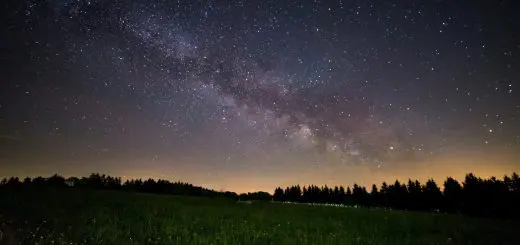What Are the Meaning and Origins of Christmas Symbols?

Looking for more amazing products? Check out our online store and explore our collection here! Happy shopping!
Before diving in, please note: This post is for informational purposes only. If you’d like to know more about how we approach topics, feel free to check out our friendly Disclaimer Page.
Hey there, amazing readers! 
We’re committed to delivering quality posts, and your support (even just sticking around despite the ads) means everything to us. So, bear with us, and thanks for helping us keep the good vibes rolling. Now, on to the fun stuff!
TRANSLATE BUTTON AT THE END OF THE ARTICLE
A Quick Overview
Christmas is a time of joy, giving, and cherished traditions.
Every corner of our homes twinkles with lights, and every table is adorned with festive treats.
But have you ever paused to ponder the deeper meanings behind these symbols?
Each element of Christmas carries its own story and significance, rooted in history and culture.
Let’s dive into the delightful world of Christmas symbols, exploring their origins and what they truly represent.
The Joyful Significance of Christmas Symbols Explained
Christmas symbols infuse the holiday season with meaning.
They tell stories, convey emotions, and connect us to traditions both old and new.
While many of us may hang stockings or decorate trees without a second thought, understanding these symbols enriches our celebration.
Take the Christmas tree, for instance.
It stands not just as a decoration but as a representation of life and renewal.
Evergreens remain green throughout the winter, symbolizing eternal life.
Ornaments add a personal touch, each one often telling a tale of family memories or shared experiences.
A unique ornament can spark laughter as we reminisce about where it came from or who gifted it.
Then there’s the star that usually tops the tree.
This star represents hope and guidance, much like the Star of Bethlehem guided the Wise Men.
Even the colors of Christmas hold significance.
Red symbolizes love and sacrifice, while green signifies hope and rebirth.
Gold reflects the glory of Christ, and white represents purity.
Through understanding these symbols, we can appreciate the essence of what Christmas is truly about—a celebration of life, love, and community.
A Brief History of Christmas: Roots and Traditions
Christmas has a fascinating history that weaves together pagan traditions, Christian beliefs, and cultural practices.
The early Christians celebrated the birth of Jesus, but it wasn’t until the fourth century that December 25 was officially recognized as his birthday.
This date coincided with ancient pagan festivals celebrating the Winter Solstice, where revelers honored the return of longer days.
As Christianity spread, many pagan customs were adapted into Christmas traditions.
The Yule log, for example, comes from ancient Norse celebrations.
People would burn a large log to symbolize warmth and light during the cold winter months.
In medieval Europe, the Christmas feast became a grand affair, with communities coming together to share food and merriment.
Over the years, various cultural practices merged into what we now celebrate as Christmas, including the tradition of gift-giving, inspired by the three Wise Men’s offerings.
The unique blend of customs from different cultures has created a rich tapestry of traditions we cherish today.
From the carols we sing to the festive foods we prepare, each aspect reflects a long history of joy and togetherness.
The Christmas Tree: Symbol of Life and Renewal
The Christmas tree is perhaps one of the most iconic symbols of the holiday season.
Originating in Germany in the 16th century, the tradition of bringing an evergreen tree into the home was a celebration of life amidst winter’s chill.
The use of evergreens symbolizes everlasting life and resilience, reminding us that even in the coldest months, life persists.
As the tree gained popularity, different cultures began to add their own unique touches.
In the early days, families decorated their trees with fruits, nuts, and candles.
These decorations were not just for aesthetics but held significance.
The fruits represented bountiful harvests, while candles symbolized Christ as the light of the world.
Today, we adorn our trees with a variety of decorations.
Whether it’s sentimental ornaments or dazzling lights, each adds a personal touch to our celebration.
I remember my family used to have a tradition where we would hang an ornament from each year’s Christmas, creating a timeline of memories.
Each decoration held a story: the funny one my sister made, the beautiful glass bauble from a holiday trip, and the handmade ones from school.
The act of decorating the tree brings families together, fostering a sense of unity and joy.
It’s not just a tree; it’s a centerpiece of laughter, storytelling, and love.
Ornaments and Decorations: A Touch of Holiday Cheer
Speaking of decorations, ornaments have evolved into a beloved symbol of Christmas cheer.
They come in all shapes, sizes, and materials, reflecting personal styles and family traditions.
Each ornament can hold a special memory or represent a unique story.
Consider the classic glass baubles: they glimmer and shine, capturing the light and spreading warmth throughout the room.
These ornaments often date back to 19th-century Germany, where artisans created elaborate designs.
Then there are the quirky ornaments that make us chuckle.
Perhaps a miniature taco or a tiny dinosaur?
These playful touches often remind us of our loved ones and the joy they bring into our lives.
Additionally, handmade ornaments carry sentimental value.
Whether crafted by a child or gifted from a friend, these pieces often evoke emotions and memories of special moments.
Decorating the house is a cherished tradition.
I can still remember the excitement each year as we unpacked boxes of decorations.
We’d laugh about the ones that looked a bit worse for wear and reminisce about where each piece came from.
Ornaments and decorations transform our homes into a winter wonderland, creating an inviting atmosphere filled with love and anticipation.
The Star on Top: Guiding Light and Hope of Christmas
Topping off the Christmas tree is often a star, a symbol deeply intertwined with the story of Jesus’ birth.
According to the Bible, a bright star shone over Bethlehem, guiding the Wise Men to the birthplace of Christ.
This symbol represents hope, guidance, and the promise of new beginnings.
The star’s placement at the top of the tree signifies reaching for the heavens.
It also serves as a reminder of the divine light that leads us through the darkness.
Each Christmas, as I place the star atop my tree, I can’t help but feel a sense of connection to that ancient story.
Over the years, other symbols have taken the star’s place, like angels or even whimsical characters.
But the star remains a timeless representation of hope.
It encourages us to seek out our own guiding lights in life.
Many families create their own traditions around this symbol.
Some might make a wish upon placing the star, while others share stories about what the star represents to them.
Whether it’s a grand, elaborate star or a simple handmade one, the star brings a sense of wonder to our celebrations, reminding us to look up and believe in something greater.
Holly and Ivy: Nature’s Festive Decorations
When we think of Christmas decorations, holly and ivy often come to mind.
These plants have an ancient history and are steeped in symbolism.
Holly, with its vibrant red berries and spiky leaves, has long been associated with Christmas.
In medieval times, it was believed that holly protected against evil spirits.
People would hang it in their homes to ward off negativity.
Today, it simply adds a splash of color and festive flair.
Ivy, on the other hand, symbolizes fidelity and eternal love.
Given its climbing nature, ivy represents the resilience of love, making it a fitting decoration for the season.
Together, holly and ivy create a beautiful pairing, often used in wreaths and garlands.
Their colors evoke the spirit of the season, reminding us of the warmth and joy that comes from family gatherings.
I remember crafting wreaths with my family using fresh holly and ivy from our garden.
We’d laugh and sing as we intertwined the greenery, chatting about our plans for the holidays and what we were most thankful for.
These natural decorations not only beautify our homes but also connect us to the deeper meanings of love, protection, and celebration.
The Christmas Wreath: Circular Symbolism of Eternity
The Christmas wreath is another cherished symbol of the season.
Its circular shape represents eternity and the endless cycle of life.
Traditionally made of evergreens, the wreath serves as a reminder of everlasting life and the hope that comes with it.
Hanging a wreath on the door is a welcoming gesture.
It signifies hospitality and the invitation to gather together.
Many families have their own wreath-making traditions, often incorporating personal touches like ribbons or ornaments.
In ancient times, wreaths were used to celebrate victories and achievements.
Today, they adorn our homes as symbols of joy and unity.
When I hang my wreath, I can’t help but think of the love and laughter that will fill my home during the holiday season.
It serves as a reminder to cherish the moments spent with family and friends.
The decorations on the wreath can vary widely, from traditional red bows to colorful ornaments, reflecting personal styles.
Each wreath tells a story about the family that created it, making it a unique part of the holiday landscape.
Candy Canes: Sweet History Behind the Festive Treat
Candy canes are a delightful treat that many of us associate with Christmas.
Their distinct shape and bright colors make them hard to resist.
But did you know their history is just as sweet as their flavor?
The origins of candy canes trace back to 17th-century Europe.
Legend has it that a choirmaster created them to keep children quiet during long church services.
Their distinctive shape symbolizes the shepherd’s staff, guiding us toward the true meaning of Christmas.
The red and white stripes also hold significance.
The red represents the blood of Christ, while the white symbolizes purity.
As we enjoy candy canes, they evoke memories of childhood—hanging them on the tree, using them as gifts, or simply enjoying them with hot cocoa.
I always loved making candy cane crafts with my friends, turning them into ornaments or decorations for our holiday tables.
The sweet smell of peppermint filled the air, and the excitement of the season made each moment feel special.
Candy canes add a dash of sweetness to our celebrations, reminding us of the simple joys that come with the holiday spirit.
Santa Claus: The Legend and His Global Variations
Who can think of Christmas without envisioning Santa Claus?
This jolly figure brings joy and excitement to children worldwide.
His origins trace back to St.
Nicholas, a 4th-century bishop known for his generosity.
Over time, his story evolved into the modern Santa we know today, complete with a sleigh and reindeer.
Santa’s red suit, fluffy white beard, and hearty laugh create an image of warmth and kindness.
He embodies the spirit of giving, reminding us to think of others during the holiday season.
Different cultures have their own variations of Santa.
In Spain, children await "Los Reyes," the Three Kings, who bring gifts on Epiphany.
In Italy, "La Befana," a friendly witch, delivers gifts on January 5.
The magic of Santa lies in his ability to unite us.
Whether we leave cookies and milk or set out carrots for the reindeer, these small acts of kindness create a sense of wonder and anticipation.
I remember eagerly awaiting Santa’s arrival and the thrill of discovering presents under the tree.
The excitement of Christmas morning is a cherished memory that continues to spark joy.
Santa Claus teaches us about the importance of generosity and compassion—qualities that we should carry throughout the year.
The Nativity Scene: Celebrating the Birth of Jesus
At the heart of Christmas lies the Nativity scene, beautifully depicting the birth of Jesus.
This symbol reminds us of the humble beginnings of Christ and the love that brought him into the world.
The Nativity scene typically includes Mary, Joseph, the baby Jesus, and various animals.
Many also include the Wise Men and shepherds, representing the diverse groups that came to honor the newborn king.
The tradition of displaying Nativity scenes started in the 13th century, thanks to St.
Francis of Assisi.
He created the first live Nativity to convey the story of Christ’s birth to those who could not read.
Every year, my family sets up our Nativity scene, often sharing stories about each character and the significance of their roles.
It’s a beautiful way to reflect on the true meaning of Christmas.
The Nativity scene encourages us to pause, remember, and appreciate the love and hope of the season.
By celebrating this symbol, we connect with centuries of tradition and the shared belief that love and peace can change the world.
Christmas Lights: Illuminating Joy and Togetherness
Christmas lights are a dazzling symbol of the season, providing warmth and cheer during the cold winter months.
Their history stretches back to the 17th century when candles were used to illuminate trees.
However, with the invention of electric lights in the 1880s, Christmas lighting became a widespread tradition.
Today, lights come in various colors, shapes, and styles.
They adorn homes, trees, and streets, creating a magical atmosphere that draws everyone in.
The flickering glow of Christmas lights symbolizes hope, joy, and togetherness.
It reminds us that even during the darkest times, there is always a light shining through.
I enjoy taking evening walks with my family, admiring the creative light displays in our neighborhood.
Each house tells a story through its decorations, and it warms my heart to see the effort put into spreading holiday cheer.
Whether you prefer classic white lights or vibrant multicolored ones, the act of decorating with lights fosters a sense of community and joy.
They invite neighbors to come together and celebrate the season.
Gifts and Giving: The Heart of the Christmas Spirit
At its core, Christmas is about giving and sharing love.
The tradition of exchanging gifts stems from the gifts brought to Jesus by the Wise Men.
This practice has evolved into the modern-day gift exchange we know today.
Gift-giving embodies the spirit of generosity, encouraging us to think of others and share joy.
It’s not the price or size of the gift that matters but the thought and love behind it.
Growing up, my family had a tradition of making gifts for each other.
Whether it was a handmade card or a favorite baked treat, these gifts were often filled with more meaning than anything store-bought.
As we gather with family and friends, the excitement of giving and receiving gifts creates a joyful atmosphere.
It brings us closer together and strengthens our bonds.
Each gift tells a story, reflecting our relationships and thoughtfulness.
The act of giving represents the love that fills our hearts during this special season.
Conclusion
Christmas symbols are far more than mere decorations; they embody the spirit of the holiday.
Each element tells a story, connects us to history, and brings warmth and joy to our celebrations.
From the evergreen tree symbolizing life to the twinkling lights representing hope, every detail enriches our understanding of this cherished season.
As we embrace these symbols, let’s remember to keep the spirit of Christmas alive in our hearts, sharing love and joy with one another.

The Enlightenment Journey is a remarkable collection of writings authored by a distinguished group of experts in the fields of spirituality, new age, and esoteric knowledge.
This anthology features a diverse assembly of well-experienced authors who bring their profound insights and credible perspectives to the forefront.
Each contributor possesses a wealth of knowledge and wisdom, making them authorities in their respective domains.
Together, they offer readers a transformative journey into the realms of spiritual growth, self-discovery, and esoteric enlightenment.
The Enlightenment Journey is a testament to the collective expertise of these luminaries, providing readers with a rich tapestry of ideas and information to illuminate their spiritual path.
Our Diverse Expertise
While our primary focus is on spirituality and esotericism, we are equally passionate about exploring a wide range of other topics and niches 

To ensure we provide the most accurate and valuable insights, we collaborate with trusted experts in their respective domains 
Our blog originally focused on spirituality and metaphysics, but we’ve since expanded to cover a wide range of niches. Don’t worry—we continue to publish a lot of articles on spirituality! Frequently visit our blog to explore our diverse content and stay tuned for more insightful reads.
Hey there, amazing reader! 
Check out our store here and take a peek at some of our featured products below! Thanks for being awesome!










